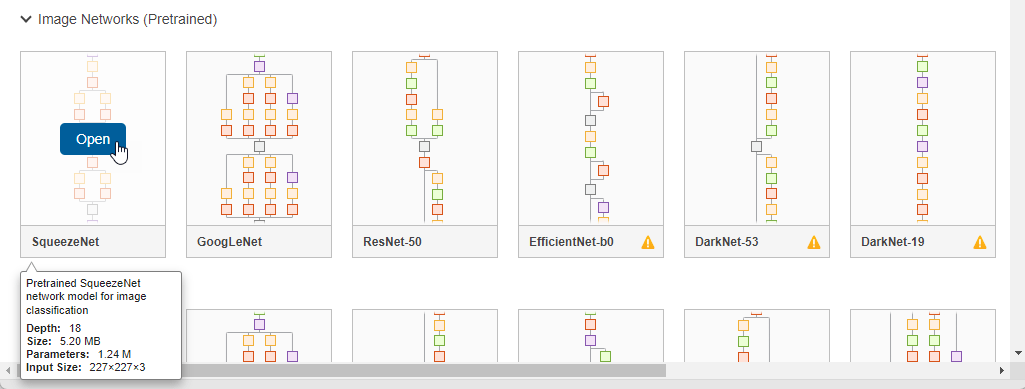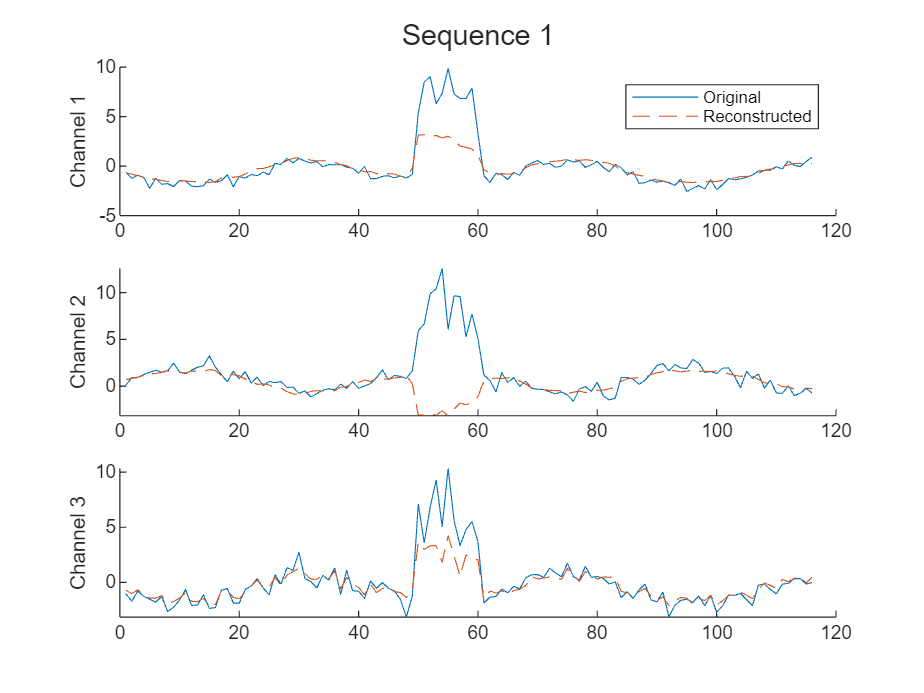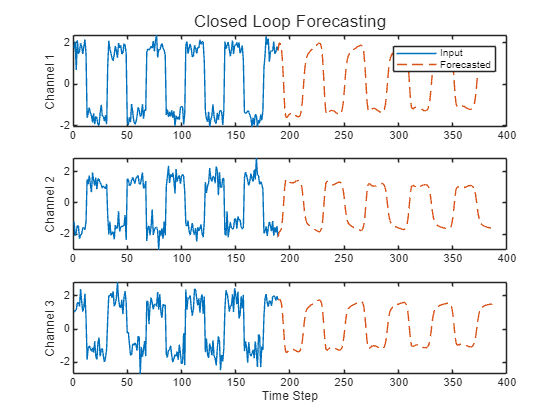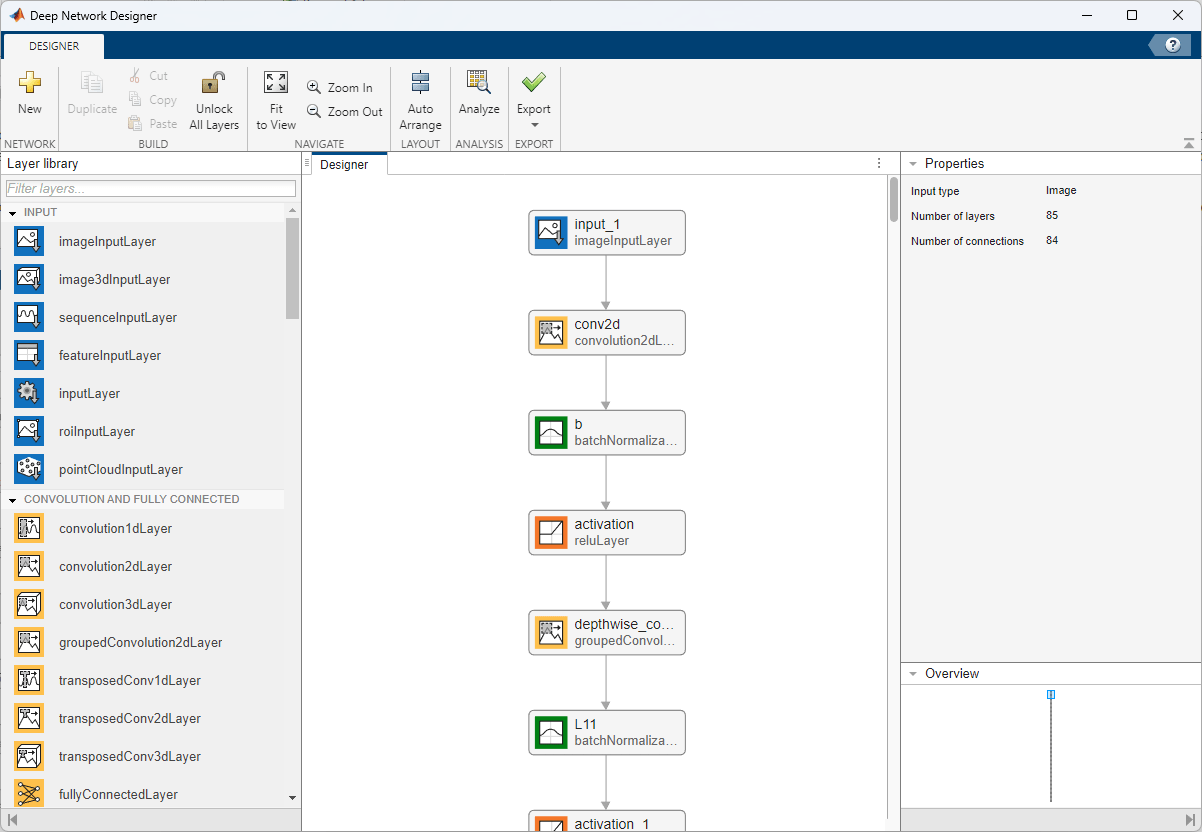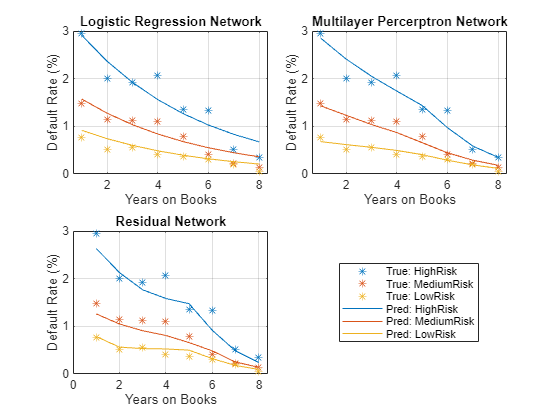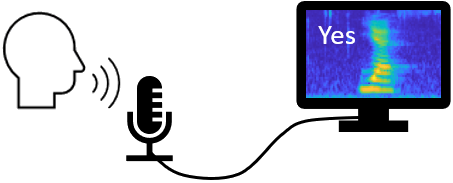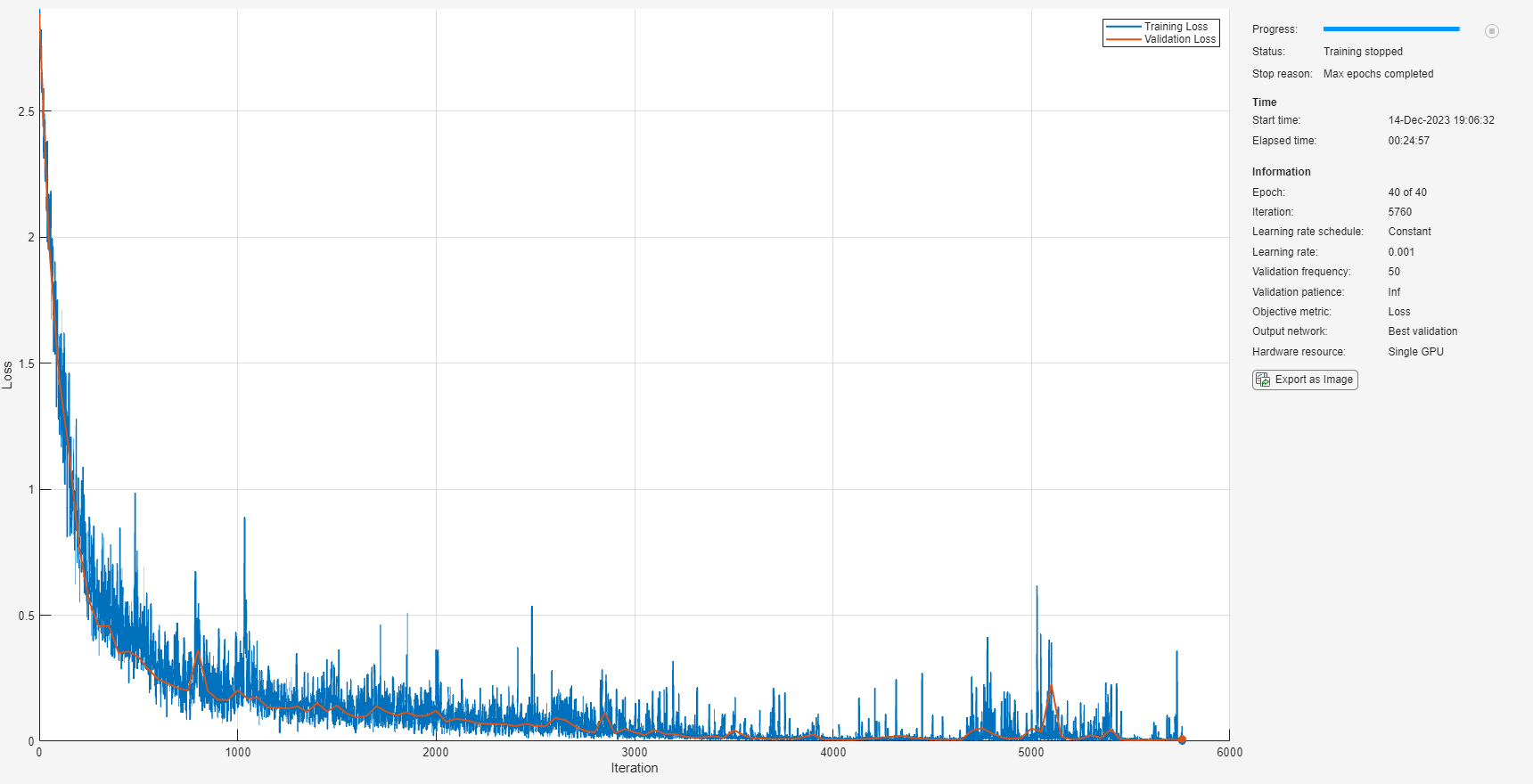内置训练
使用内置训练函数训练深度学习网络
定义网络架构后,您可以使用 trainingOptions 函数定义训练参数。然后,您可以使用 trainnet 函数训练网络。使用经过训练的网络预测类标签或数值响应。
函数
主题
训练基础
- 创建简单的深度学习神经网络以用于分类
此示例说明如何创建和训练简单的卷积神经网络来进行深度学习分类。 - 针对回归训练卷积神经网络
此示例说明如何训练卷积神经网络来预测手写数字的旋转角度。 - Create Custom Deep Learning Training Plot
This example shows how to create a custom training plot that updates at each iteration during training of deep learning neural networks usingtrainnet. (自 R2023b 起) - Custom Stopping Criteria for Deep Learning Training
This example shows how to stop training of deep learning neural networks based on custom stopping criteria usingtrainnet. (自 R2023b 起) - Speed Up Deep Neural Network Training
Learn how to accelerate deep neural network training. - Define Custom Learning Rate Schedule
This example shows how to define a time-based decay learning rate schedule and use it to train a neural network. - 训练具有多个输出的网络
此示例说明如何训练具有多个输出的深度学习网络,来预测手写数字的标签和旋转角度。 - Train Network with Complex-Valued Data
This example shows how to predict the frequency of a complex-valued waveform using a 1-D convolutional neural network. - Data Sets for Deep Learning
Discover data sets for various deep learning tasks. - Deep Learning Metrics
Comparison of metrics for deep learning tasks.
表格数据工作流
- Training Neural Networks with Tabular Data
Learn about training neural networks with tabular data. - Train Neural Network with Tabular Data
This example shows how to train a neural network with tabular data. (自 R2023b 起)
序列数据工作流
- 使用深度学习进行时间序列预测
此示例说明如何使用长期短期记忆 (LSTM) 网络预测时间序列数据。 - 使用深度学习进行序列分类
此示例说明如何使用长短期记忆 (LSTM) 网络对序列数据进行分类。 - 使用深度学习进行“序列到序列”分类
此示例说明如何使用长短期记忆 (LSTM) 网络对序列数据的每个时间步进行分类。 - 使用深度学习进行“序列到序列”回归
此示例说明如何使用深度学习预测发动机的剩余使用寿命 (RUL)。 - 使用深度学习进行“序列到单个”回归
此示例说明如何使用长短期记忆 (LSTM) 神经网络来预测波形的频率。 - 使用一维卷积进行序列分类
此示例说明如何使用一维卷积神经网络对序列数据进行分类。 - Train Network with LSTM Projected Layer
Train a deep learning network with an LSTM projected layer for sequence-to-label classification. - Train Sequence Classification Network Using Data with Imbalanced Classes
This example shows how to classify sequences with a 1-D convolutional neural network using class weights to modify the training to account for imbalanced classes. - Sequence-to-Sequence Classification Using 1-D Convolutions
This example shows how to classify each time step of sequence data using a generic temporal convolutional network (TCN). - Sequence Classification Using CNN-LSTM Network
This example shows how to create a 2-D CNN-LSTM network for speech classification tasks by combining a 2-D convolutional neural network (CNN) with a long short-term memory (LSTM) layer. - 使用序列数据的自定义小批量数据存储来训练网络
此示例说明如何使用自定义小批量数据存储基于无法放入内存的序列数据来训练深度学习网络。 - 使用深度学习训练语音命令识别模型
此示例说明如何训练一个深度学习模型来检测音频中是否存在语音命令。此示例使用语音命令数据集 [1] 来训练卷积神经网络,以识别一组命令。 - Chemical Process Fault Detection Using Deep Learning
Use simulation data to train a neural network than can detect faults in a chemical process. - 使用深度学习进行电池荷电状态估计
定义需求、准备数据、训练深度学习网络、验证稳健性、将网络集成到 Simulink 中以及部署模型。 (自 R2024b 起)
图像数据工作流
- 基于图像和特征数据训练网络
此示例说明如何使用图像和特征输入数据来训练对手写数字进行分类的网络。 - Multilabel Image Classification Using Deep Learning
This example shows how to use transfer learning to train a deep learning model for multilabel image classification. - Build Image-to-Image Regression Network Using Deep Network Designer
This example shows how to use Deep Network Designer to construct an image-to-image regression network for super resolution.
